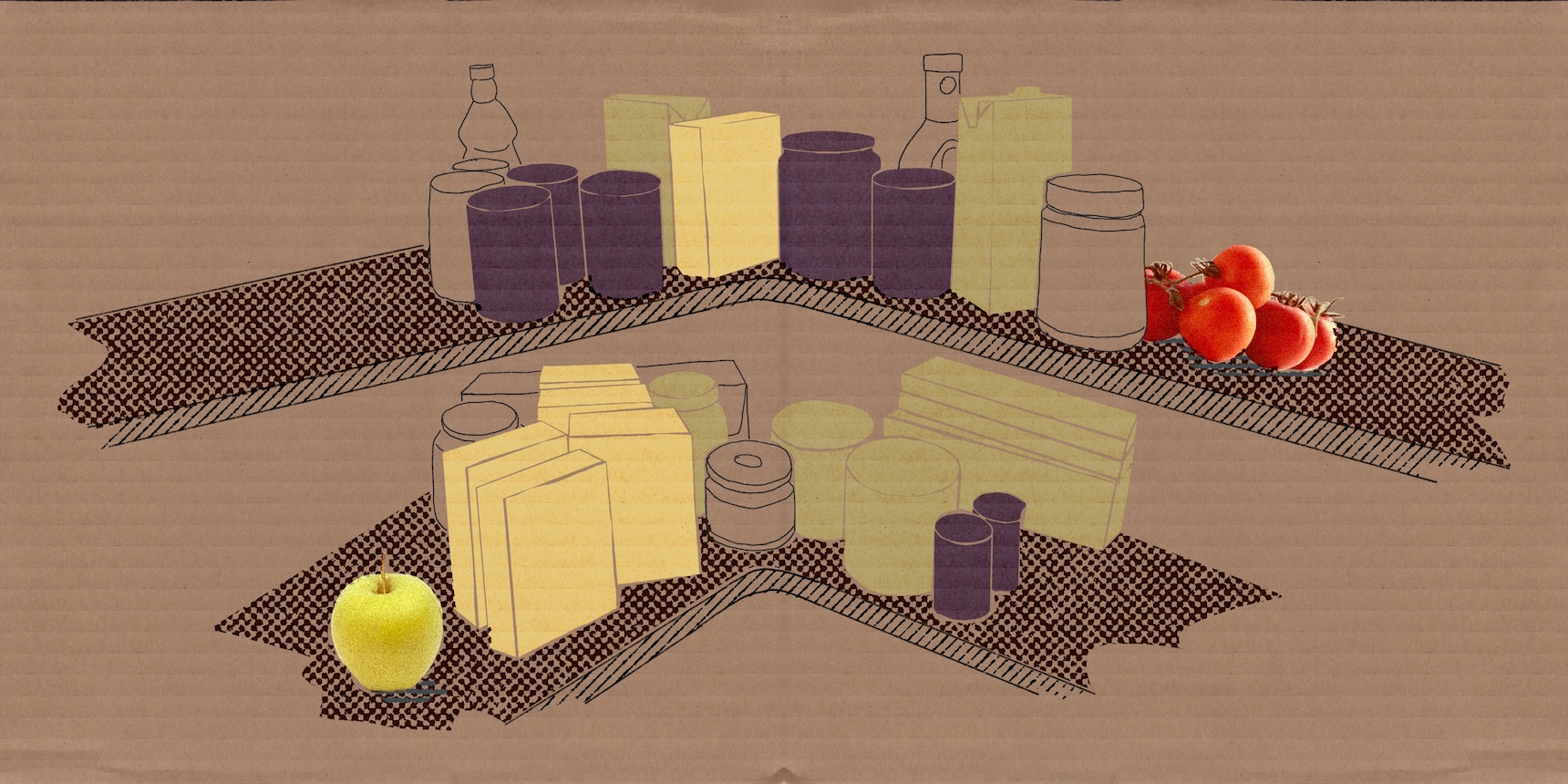

Chir’s House is a family-owned dried fruit business established in 2015 in the village of Byurakan in Armenia. The Hovhannisyans chose a rural landfill as the location to open the business. The company now produces organic dried fruits and cultivates organic strawberries for local and international consumption.
Although not aiming for significant production at this stage, Poghos Hovhannisyan considers his family’s business a success. He believes that “anything that is done well is doomed to succeed.”
Producing organic goods is challenging, as the raw materials, in this case fruits, must also be organic. However, finding organic fruits in Armenia is not an easy task, as Hovhannisyan notes. To address this issue, the family began cultivating organic strawberries in a specialized greenhouse, enabling them to produce high-quality and expensive dried fruits. For other fruits, the business relies solely on local organic production, which is limited in quantity and comes at a high price.
According to Hovhannisyan, importing raw materials has never been a viable option for small businesses like theirs. This is because organic products are expensive everywhere, and the process would be more of a hindrance than an advantage.
Before the COVID-19 pandemic, Chir’s House exported most of its products, primarily to Russia and the Eurasian Economic Union countries. With the pandemic, however, the company had to suspend its agreements with foreign customers.
Organic food is relatively expensive for the Armenian market, limiting the business’s growth potential for local consumption. Not everyone in the country can afford to pay around $150 for a kilogram of dried strawberries. Poghos Hovhannisyan says they typically sell up to 200 kilograms of strawberries annually.
“We usually produce as much as we are sure could be consumed,” Hovhannisyan says.
Organic food processing is a relatively new sector in the Armenian manufacturing industry and cannot yet be considered a game changer in food processing. However, in the past few years, the industry has been gaining momentum, with both demand and production capacity increasing.
Finding green and healthy food in Armenian supermarkets used to be difficult, but now several companies produce organic, healthy, and dietary foodstuffs that can be found on most shelves.
As of mid-2020, there were around 60 local businesses and private entrepreneurs authorized and licensed for organic food production. The Armenian government regulates organic food production and promotes it through different programs.
Long History
Compared to organic production, food and agro-processing in Armenia has a long history and is a crucial part of Armenia’s economy.
In 2022, Armenia’s manufacturing industry had an estimated volume of around $4 billion US, with over 40% or 1.8% produced by the food industry and around 14% produced by beverage production.
In 2022, the food industry experienced a growth rate of approximately 7%, accounting for over 39% of the country’s total production. However, some types of food products have seen a decline in recent years, leading experts to label it as a “crisis.”
According to some economists, cheaper imported products have impacted local production due to the valuation of the Armenian dram. This has caused local manufacturers to lose their share of the local market.
For example, the meat industry reported a decline of 5.2% in 2022 compared to the previous year. Processed meat production also declined by 8.2%. During the same period, tobacco production increased by about 15%.
Armenian-made bread, meat, dairy, processed meat and beverages have a significant share in the local market due to their relatively competitive prices and quality. These types of food are also well-known in countries with whom Armenia has a history of food trade, such as Russia, Iran, Turkey and Georgia.
Exports
In countries like Armenia, well-planned imports and exports are crucial for the food production industry. The small local market restricts companies from expanding, while limited access to raw materials further complicates the situation.
The volume exports of food produced in Armenia increased by over 40% in 2022, compared to the previous year, totaling around $880 million. Food imports also increased drastically, by around 30%.
The annual food exports account for around 30% of the country’s total exports, making it one of the most important sectors for Armenian foreign trade.
Armenia’s primary food processing exports include alcoholic beverages, cheese, canned fruits, jam, coffee and mineral water. However, these exports face unique challenges, such as maintenance difficulties and short shelf lives, as well as country-specific import requirements. These factors sometimes limit market opportunities and make diversification more difficult.
According to Emil Stepanyan, a member of Export Armenia, the products exported from Armenia are generally of good quality and, in some cases, better than the local production of the importing country. However, many countries, particularly those in the West, are overly protective of their food industries and prefer to support local production rather than importing.
These issues do not concern the Eurasian Economic Union and Georgia, where the vast majority of products exported from Armenia are sent.
However, it’s not just about numbers and prices. Strategies and a philosophical approach are needed when it comes to food processing, according to Stepanyan. He believes that Armenian food exports should focus on providing customers with premium-class foodstuffs, as producing cheaper products and competing with larger countries is not realistic for a small country like Armenia.
For premium goods, companies focused on exports should pay more attention to marketing and sales, as well as the quality of the food itself.
“Armenia does not utilize the full potential of importing raw materials,” Emil Stepanyan says. A country with limited production, Armenia should focus on processing imported raw materials into good quality, ready-to-use food for customers, the economist suggests.
“Relying solely on raw materials from Armenia would not allow manufacturers to increase production capacity,” Stepanyan explains. He also notes that increased production leads to lower prices. This is what helps larger companies from countries with more resources to be more competitive in the international market.
For instance, the same type of food, fruit, or vegetable imported from Turkey and Iran has a lower price than those originating in Armenia. As Stepanyan explains, this may lead to misconceptions, but the reason is clear: the cost of one sample decreases as the number of products increases.
In the case of Armenian foodstuffs, their production is limited, and their prices are higher.
As an alternative, Armenian manufacturers can focus on countries where raw materials are cheaper and imports are less restricted. This includes neighboring countries like Iran, Turkey, and Russia –– one of Armenia’s main trade partners.
Armenia produces a variety of products that rely on imported raw materials. For example, the textile industry largely depends on materials from Turkey. However, this can create confusion for consumers who may not know if the food they consume is actually from Armenia or not.
Despite being processed based on imported raw materials, Armenia-made coffee, honey, and other products have recorded successes in exports and foreign consumption.
Armenia’s Renowned Brandy and Its Limitations
Armenia has a long-standing tradition of producing high-quality alcoholic beverages, particularly brandy. The Yerevan Brandy Company, established in 1887, has been producing internationally renowned brandies for over a century. However, the country faces several challenges in expanding its brandy exports to new markets.
Around 90% of Armenia’s brandy production is exported abroad, mainly to Russia. Brandy production accounts for the largest share of Armenia’s total beverage processing, followed by non-alcoholic beverages. However, the regulations for Armenian cognac require manufacturers to use only raw materials from Armenia, which limits expansion into new markets. In contrast, alcoholic beverages that are free to use imported goods, such as fruit wines or beer, have recorded dramatic growth and become more visible both locally and internationally.
Despite the challenges, Armenia’s wine industry is growing. Over 10 million liters of wine are produced each year, half of which is exported abroad. The value of wine exports has doubled in the last five years, reflecting a growing demand for Armenian wines in the global market.
Magazine Issue N28
Manufacturing
In this issue, we explore Armenia’s diverse manufacturing industries, from food production to textile manufacturing to diamond processing. We delve into the challenges and opportunities facing each sector, the innovations driving growth, and the impact on Armenia’s economy and society.
Are Diamonds Forever?
Successive Armenian governments have emphasized the importance of the diamond industry as a key branch of the economy. Despite fluctuations and challenges, the industry continues to be well-established in Armenia.
Read moreMeasure Twice, Cut Once: Armenia’s Textile Industry
Creating economically complex, high value-added textile products is the key to competitiveness in global markets. However, the added value index of the textile sector in Armenia has decreased over the last three years, indicating a decline in productivity. What is the government doing?
Read moreArmenia’s Manufacturing Industry: An Overview
By promoting manufacturing, Armenia can shift its economic reliance away from traditional sectors such as agriculture and mining and move toward value-added activities and create a path toward sustainable economic growth and prosperity.
Read moreMagazine Issue N27
Books & Literature






